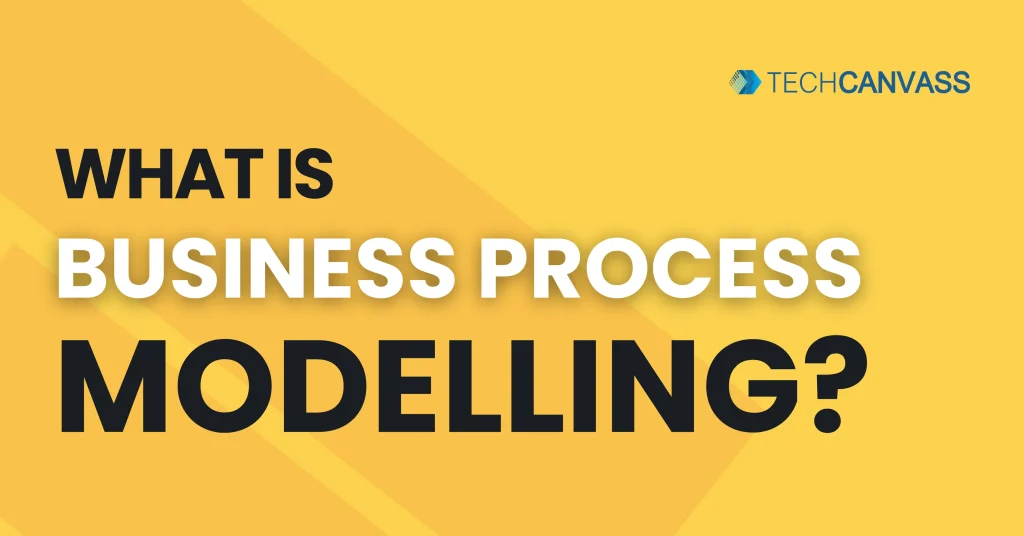When an organization expands, the occupancy and tasks get complicated with no time. Therefore, a proper scheduled process is necessary to manage everything in an organization. Business process modelling is one of them, which creates an appropriate workflow for the company by using graphical representations and tools.
Business process modelling, a technique used in business process management (BPM) that generates data-driven representations of workflows, allows business analysts to obtain end-to-end views of the business process lifecycle. These process models assist firms in identifying possible issues, surfacing critical metrics, identifying workflows, and intelligently automating activities. So, let’s move ahead and understand various aspects and business process modeling techniques in simple words.
What is Business Process Modeling?
Every business requirement is to perform potential tasks throughout the year. Then, once the year ends, the inspection team does the testing and analysis. Growth can only be achieved when you know how the business works. So, what is business process modeling?
Business process modeling is nothing but the graphical chart representation that systematically denotes an organization’s various workflow. It captures the different workflows and presents them in the form of straightforward visual representation for better understanding. This is useful in determining any bottlenecks or backlogs in work and identifying them for future reference. In this case, different tools are necessary to understand the current situation and compare them with future aspects.
Useful Links – Power BI: Introduction, Key Features, and Importance | Power BI Training | CBDA Training
Aspects Of Business Process Modelling
Business process modeling is the best way to understand the working community and make changes wherever necessary. First, however, you need to understand a few aspects of business process modeling before moving.
- Business process modeling is not manual. Instead, they are processed by various data mining algorithms that use pre-occupied data to make the business model.
- Objective views of the workflow are assured because business process modelling works on quantitative data. Therefore, it includes critical data, metrics, and events from the past.
- Typically, process models are displayed using either the Unified Modeling Language (UML) or Business Process Modeling Notation (BPMN), two standardized types of graphical business process notation (UML). When utilized in a process model, specific visual components of these notation systems have widely understood meanings.
- Process maps, another popular variety of business process diagrams, should not be confused with business process models. Instead, process maps are manually developed based on employee reports and offer higher-level perspectives of workflows.
Also Read – What is Business Process Reengineering (BPR)?
Why Use Business Process Modelling?
An organization can make better decisions for resource allocation, process improvement, and overall business strategy with the help of business process modelling, which provides objective business intelligence. Enterprise teams may ensure that workflows produce the expected results by clearly understanding the processes involved. Operating expenses are reduced, revenue increases, and company outcomes are strengthened. However, this helps companies to do specific tasks like-
- Access and analyze quantitative data
- Reduce the operation costs
- Streamline and increase the process automation
Must Read – Key Skills of Business Analyst in Analytics Projects
Business Process Modelling Techniques
Depending on your business type, a firm may appear to be a collection of straightforward tasks performed to accomplish the main objective, such as gaining more clients or selling more products. But if you look more closely, you’ll see several tiny but crucial processes involving various stakeholders that must cooperate to achieve a common objective.
Business Process Modeling Notation (BPMN)
Now BPMN 2.0 is becoming one of the most attentive tools for analysts who seek process modelling. It uses lines, arrows, and geometric shapes to communicate the flow of the process. Process consultants must see the demo of the BPMN and understand how it works. BPMN is primarily designed for business process modelling.
Flowcharts
Flowcharts are a straightforward yet efficient approach to explaining intricate process flows. They show the various steps of the process sequentially, from inputs to the actual process to the outcomes. Flowcharts offer BPMN’s fundamental structure for displaying complex process flows.
UML Diagrams
One of the widely used methods of business process modelling is the use of UML diagrams. Unified Modeling Language, or UML, was initially created for the software development industry.
Use case diagrams, sequence diagrams, communication diagrams, and other variants of UML are examples of object-oriented representation charts that show the connections between “actors” and “systems.”
Gantt Charts
Gantt charts can depict the entire process using “time taken” as one of the critical axes rather than showing the steps sequentially. Compared to other solutions, it better displays the total time needed to do a project.
Useful Links – Power BI: Introduction, Key Features, and Importance | Power BI Training | CBDA Training
Advantages of using a Business Process Modelling?
As we have discussed business process modeling techniques, let us now look at the bigger picture. But, first, let us now understand why business process modelling is essential for businesses in the first place.
- To maintain and understand the clear picture of an organization
- To understand the workflow and how the company operates in micro-level
- Understanding the interaction in workflow and bringing out the defects if necessary
- Stop reductant tasks and understand the automation process.
- Agility and flexibility
- Standardization across the organization
Treading – Data Analysis Skills for Business Analysts
Why is it essential to use Business Process Modeling Software?
- Instead of using Business Process Modeling Notation, various software visual workflow builder is proprietary and straightforward.
- The software automates business processes quickly and effectively for small and large businesses.
- Most of your daily tasks can be automated in minutes using the freely available workflow templates.
- Your workers can quickly come under the enchantment of automation thanks to business process modelling software.
- The business process modelling software can help you work more effectively with automatic email reminders, cloud-based file access, and interfaces with external systems.
- The modelling tool can visualize and automate complicated operations more quickly.
Conclusion
As we know, business process modelling is an essential practice for any business to grow constantly. However, there are various bottlenecks to the efficiency and productivity of the workflow. Before understanding the process, it is essential to analyze your organization. It will help in the easy application of the model and will provide you with maximum results. Any automation endeavor or business process management project must start with process modelling. Enterprises cannot efficiently optimize and automate workflows at scale without complete views of the existing processes and the underlying business logic.
Useful Links – Power BI: Introduction, Key Features, and Importance | Power BI Training | CBDA Training



